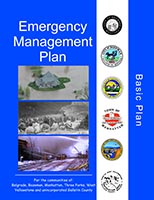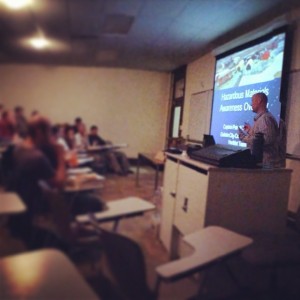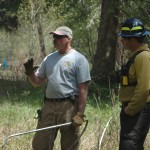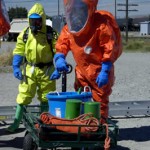Emergency Management is an important partner with the public safety agencies in Gallatin County. A good method to explain the role we carry out is to relate an incident to a play.
The Producer – Gallatin County Emergency Management is responsible for the coordination of the public safety agencies, such as fire, police, ambulances, public works, volunteers, and more, before an emergency.
The Stage Director – During the emergency, Gallatin County Emergency Management assists with the control of resources. A common misconception is that we run the incident, this is incorrect. The police and fire chiefs, public works directors, and similar positions, are all people that control and direct resources. Our role is to assist these people in the application of their resources to effect a coordinated response to the emergency.
Where did Emergency Management originate?
 Emergency Management’s roots date back to the 1800’s in large cities. Over crowding of wooden buildings and the resulting devastating fires brought the onset of organizations to address this hazard. In 1803 the US Government passed what is regarded as the first national disaster legislation to provide support for a devastating fire in Portsmouth, New Hampshire. These programs grew into the civil defense programs of World War II.
Emergency Management’s roots date back to the 1800’s in large cities. Over crowding of wooden buildings and the resulting devastating fires brought the onset of organizations to address this hazard. In 1803 the US Government passed what is regarded as the first national disaster legislation to provide support for a devastating fire in Portsmouth, New Hampshire. These programs grew into the civil defense programs of World War II.
In 1979 the Federal Emergency Management Agency (FEMA) was created by consolidation of five other agencies which had each focused on a single hazard. With this came the concept of “comprehensive emergency management.” this concept moved away from a single hazard approach, to the all-hazards approach we see today. After the creation of FEMA, many local agencies changed their names to include “emergency management.”
Emergency Management Today
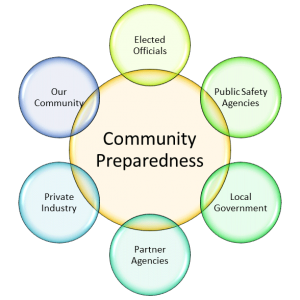 Today, using the concept of comprehensive emergency management, Gallatin County Emergency Management aims to, “protect the civilian population and property from the destructive forces of natural and man-made disasters through a comprehensive program of mitigation, preparedness, response and recovery.”
Today, using the concept of comprehensive emergency management, Gallatin County Emergency Management aims to, “protect the civilian population and property from the destructive forces of natural and man-made disasters through a comprehensive program of mitigation, preparedness, response and recovery.”
Emergency Management activities are divided into four phases; mitigation, preparedness, response, and recovery. Activities in the Mitigation Phase work to, “eliminate or reduce the chance of occurrence or the effects of a disaster.” The Planning Phase addresses how we will respond to an disaster in our community that can’t be mitigated. The Response Phase is the time spent immediately after an incident occurs that we are providing direct assistance to the community. The Recovery Phase runs from the end of the Response Phase until activities are back to normal.
What activities are emergency management involved with in Gallatin County?
The following four categories are the four phases that are considered to make up the Emergency Management field. While these four phases are what the national standards are based on, it’s important to note that each communities emergency management program will differ. While the core functions do not change, each program is what the community makes of it.
Mitigation
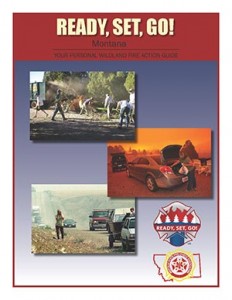 Mitigation is process of identifying what hazards exist, and out of those what hazard impacts can be minimized or eliminated. For example, if you have a road that washed out every year from spring runoff, you would minimize the impact to that road by reinforcing it or relocating it.
Mitigation is process of identifying what hazards exist, and out of those what hazard impacts can be minimized or eliminated. For example, if you have a road that washed out every year from spring runoff, you would minimize the impact to that road by reinforcing it or relocating it.
The following are the mitigation programs and functions that Emergency Management is involved with on a regular basis.
- Hazard Analysis (Hazard Mitigation Plan)
- Pre Disaster Mitigation Grant Program
- Wildland Fuel Modifications
- Ready, Set, Go Program
- Seismic Retrofits
Preparedness
In the preparedness phase we are focused on the incidents that we have identified are a risk to our community, and that we cannot mitigate, so we prepare for them. This is the where the bulk of the everyday work is carried out in emergency management.
The following are preparedness programs and functions that Emergency Management is involved with on a regular basis.
- Planning
- Emergency Preparedness and Community Right to Know Act mandates
- Local Emergency Planning Committee (A.K.A. AHAD)
- Tier 2 Hazardous Materials Reports
- LEPC Hazardous Materials Plan
- Hazardous Materials Spill Reporting
- Gallatin County Coordination Center
- Responder Training
- Support local training (Fire Council, SC Zone Training, etc…)
- Supply quality training through EM Channels (i.e. NM Tech Bomb Class)
- Coordination Center training
- National Incident Management System compliance
- Public Education
- Preparedness lectures
- Printed materials for events
- ReadyGallatin.com Website
- Map Your Neighborhood
- Community Emergency Response Teams
- Interagency Coordination
- Fire Council and Sub Committees
- American Red Cross Disaster Action Team
- Gallatin County SAR Council
- South Central Montana Interagency Zone (wildland fire coordination)
- Unified Health Command
- Gallatin Valley Ham Radio Club
- US Forest Service
- National Park Service
- State Agencies
- County and City agencies
Response
In the Response phase, and event has occurred and the community is now responding to it. Generally during this phase Emergency Management is providing support to our partner agencies.
The following items are functions that emergency management is either supporting or performing during an incident.
 Incident monitoring and status (what’s happening and who needs that info)
Incident monitoring and status (what’s happening and who needs that info)
- Keeping elected officials and department heads situationally aware
- Providing Situation Reports to affected agencies
- State DES, MHP, MDT, etc…
- Neighboring Counties
- Agencies within Gallatin County
- Providing Logistical Support to the Authority Having Jurisdiction
- In field on small incidents
- From the Emergency Operations Coordination with other agencies on the Gallatin County Commission’s behalf
- Establish tie between incident and county
- Look out for community’s interest
- Provide a local contact for the incident
 Emergency Public Information and Warning
Emergency Public Information and Warning
- Emergency Alert System
- Emergency Preparedness Notification System (a.k.a Reverse 911™) – Primarily 911 function
- Public Information
- May assist Authority Having Jurisdiction with PIO function at their request
- May assist Authority Having Jurisdiction with preparation of media releases and their dissemination, at their request
- Coordination Center Activation
- Serve as CC Manager
- Sets up CC
- Acts as a facilitator
- Technical support for facility
- Serve as CC Manager
- Drafting of Emergency and/ or Disaster Declarations as necessary
- Sheltering Operations
- Coordination with Red Cross
- Tracking of incident expenditures
- 2 Mil Disaster Assessment
- Assistance Thresholds
- Public Assistance Program Match
- Fire Management Assistance Grant Match
Recovery
The Recovery Phase begins after the emergency response to the incident is over. This is where we try to get life back to normal for the community. Emergency Management is the lead agency for recovery operations.
- Preliminary Damage Assessments (How Much Damage, public or private)
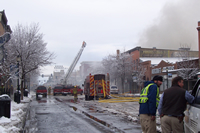 Human Services (Housing, Food, etc…)
Human Services (Housing, Food, etc…)- Cost Recovery (private and public) – Often a multiyear process
- FEMA Individual Assistance Program
- FEMA Public Assistance Program
- USDA Agriculture Disaster Programs
- FEMA Fire Management Assistance Grant
- Post Disaster Mitigation Program
- Emergency Protective Measures
Excerpts and content taken from: FEMA’s IS-1 Emergency Manager, an Orientation to the Position, Course Manual
- Wildland Training
- Column Test
- Mass Casualty Training
- Application of “Moulage”
- Fire Command Officer

